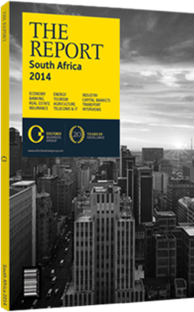Bringing services to an increasing number of people
Bank penetration increased from 67% in 2012 to 75% in 2013, with an additional 3.5m people having access to formal banking services. The rollout of the South African Social Security Agency – adding 1.9m people – spurred much of this growth. Of the 16m South Africans who receive social grants, 93% are now registered on the new social security system, which requires a bank account for payment. The 2013 financial inclusion survey by Johannesburg-based organisation FinScope – an initiative of FinMark Trust, an independent trust funded primarily by UK aid – found that there was an 8.3% increase in formal borrowers over the year.
These statistics on financial inclusion are encouraging for a market that is already the most inclusive on the continent. The FinScope survey found that more people are becoming self-sustaining, as reliance on others for income and loans dropped in 2013. Less encouraging is the fact that household income has not increased. Still, innovative new platforms are emerging to bring more people into the financial system.
The National Development Plan – the government’s economic vision – calls for 90% of the population to be banked by 2030. While the banking industry has been supportive of the goals of financial inclusion, closing the gap will prove tricky. With the extreme poverty rate at 20.2% and the unemployment rate at 25.5% as of the second quarter of 2014, according to Stats SA, as well as a large informal sector, increasing financial inclusion to 90% will require involving more vulnerable and lower-income segments of society, which can be difficult. Self-employed, informally employed and part-time employed people are higher risk for most banks because of unpredictable earnings and a lack of collateral, as well as the general opacity of the lending environment, according to Elizabeth Lwanga-Nanziri, CEO of the South African Savings Institute.
High Debt, Low Savings
In an effort to promote financial inclusion, unsecured lending was initially encouraged. The market for unsecured lending grew unchecked as a result, despite the National Credit Act of 2005 putting greater restrictions on lending. Over-indebtedness from a combination of low wages and easy lending was seen as one of the causes of the 2012 mining strike, and unsecured lending practices were reviewed in October 2012 by the minister of finance and banking industry leaders. By 2013 the National Credit Regulator pledged a clampdown on unsecured lending. Despite the regulator’s concerns, the number of unsecured borrowers doubled in 2013. Of the 1.2m people added, 1m borrowed from banks (the rest from retail stores and insurance firms), and one-fifth of the 1m took out loans to pay bills and to cover personal expenses. By 2013, 4.7m adults showed signs of over-indebtedness. The high levels of unemployment and poverty, combined with the large proportion of vulnerable individuals, means that saving is also rare.
According to FinScope, 58% of South African adults are not saving, and the country’s savings-to-GDP ratio dropped to 13.5% in 2013. “The lack of financial literacy is a big problem,” Lwanga-Nanziri told OBG. She says this factor weighs on the decision not to be banked. “People put their money in bank accounts, but once they gain awareness of the terms and conditions, they shift their savings back to informal schemes,” said Lwanga-Nanziri. Low-income earners need flexibility with withdrawals, but banks charge high fees when money is drawn out of savings accounts before the specified term has ended. A trust deficit is another factor dissuading people from using formal banking.
Boosting Awareness & Understanding
Some initiatives are making efforts to improve household financial awareness. Old Mutual, for instance, has a number of financial management tools and campaigns, such as its On the Money Programme, a financial education initiative created to teach South Africans how to best manage their finances. In order to foster a culture of savings and raise understanding of financial planning, the South African Savings Institute also undertakes initiatives such as Financial Planning Week and the July National Savings Awareness Campaign.
You have reached the limit of premium articles you can view for free.
Choose from the options below to purchase print or digital editions of our Reports. You can also purchase a website subscription giving you unlimited access to all of our Reports online for 12 months.
If you have already purchased this Report or have a website subscription, please login to continue.

